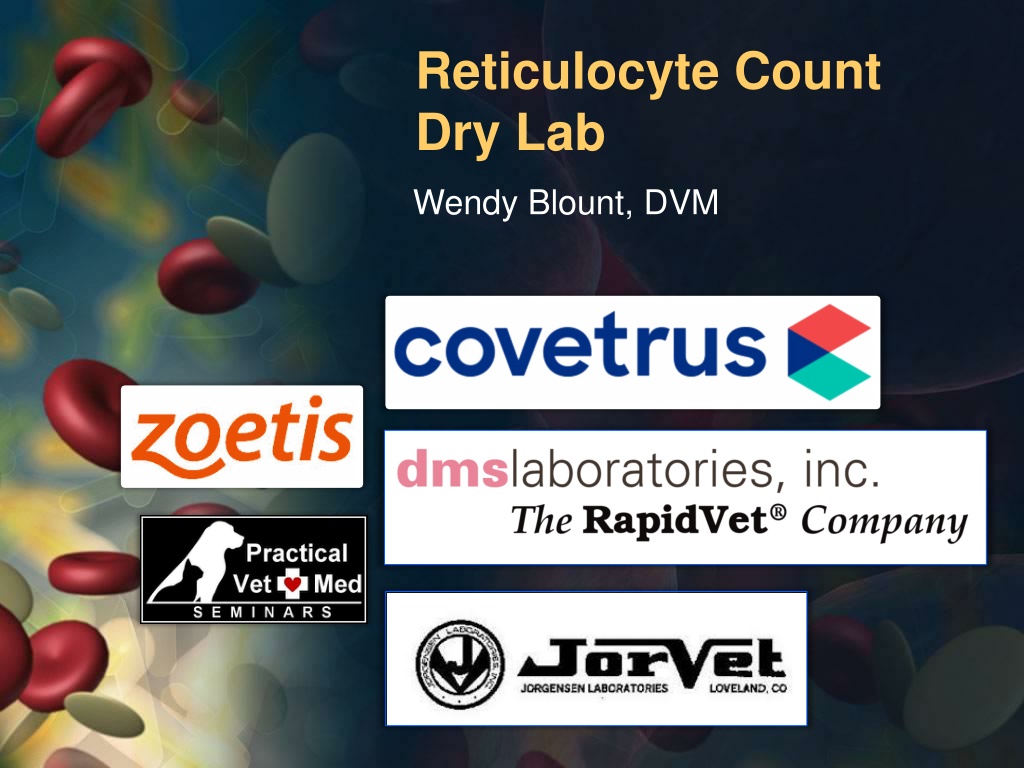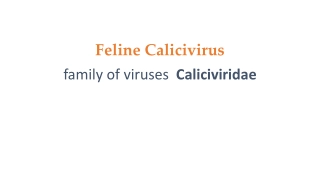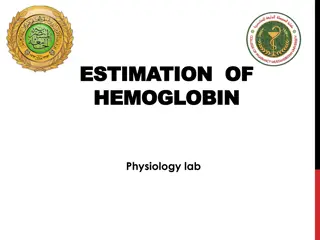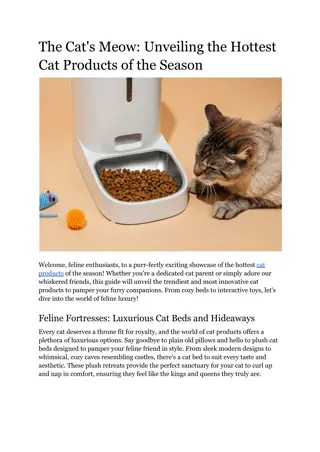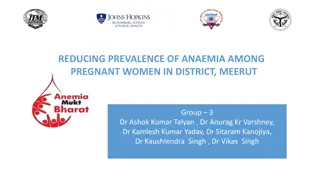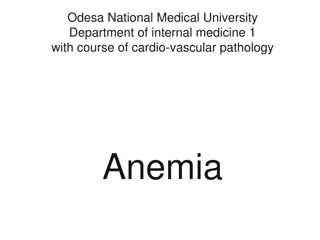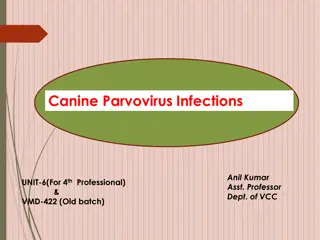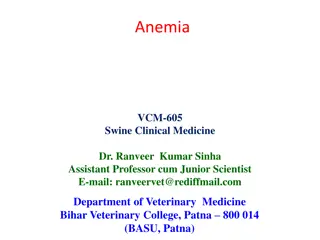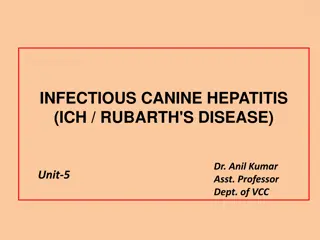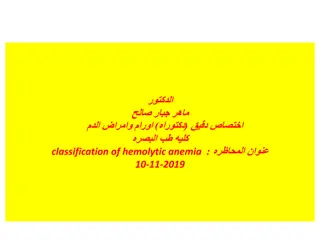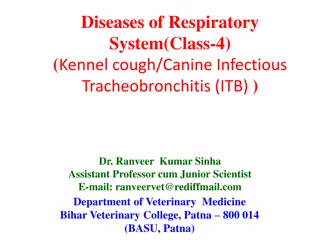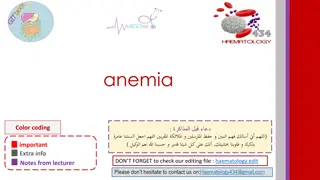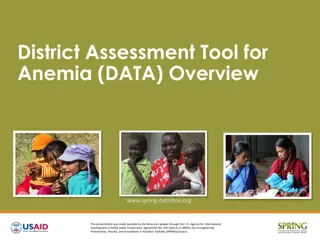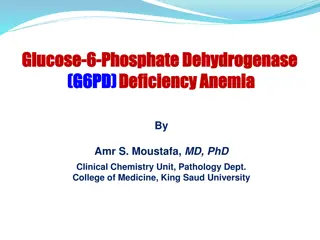Interpreting Reticulocyte Count in Canine and Feline Anemia
Reticulocyte count is a crucial diagnostic tool in evaluating regenerative anemia in dogs and cats. By examining the presence of reticulocytes in blood smears and calculating their percentage relative to red blood cells, veterinarians can determine the degree of anemia and the body's response to it. This information helps in assessing the effectiveness of the bone marrow's efforts to produce new red blood cells. Differentiating between aggregations and punctates, as well as comparing various levels of reticulocytes in different scenarios, aids in pinpointing the severity of the anemia and guiding appropriate treatment strategies. This detailed guide provides insights into interpreting reticulocyte counts in canine and feline patients based on specific observations and calculations.
Uploaded on Feb 24, 2025 | 0 Views
Download Presentation

Please find below an Image/Link to download the presentation.
The content on the website is provided AS IS for your information and personal use only. It may not be sold, licensed, or shared on other websites without obtaining consent from the author.If you encounter any issues during the download, it is possible that the publisher has removed the file from their server.
You are allowed to download the files provided on this website for personal or commercial use, subject to the condition that they are used lawfully. All files are the property of their respective owners.
The content on the website is provided AS IS for your information and personal use only. It may not be sold, licensed, or shared on other websites without obtaining consent from the author.
E N D
Presentation Transcript
Reticulocyte Count Dry Lab Wendy Blount, DVM
The Reticulocyte Count 1. Mix EDTA blood with stain 1:1 (1:3 for birds) New methylene blue (NMB) Brilliant cresyl blue (BCB) 2. Incubate 10-20 min. for NMB, 15-30 for BCB 3. Mix blood again 4. Air dry blood smears and stain 5. Count 500-1000 RBC 6. Report % retics of RBC counted
The Reticulocyte Count Count only aggregates, not punctates Feline punctates have up to 10-15 blue dots that do not coalesce Canine punctates have 1-2 blue dots that do not coalesce
Canine Reticulocytes X X X X X RBC on the slide = 24 + 14 + 30 + 22 = 90 Reticulocytes = 20 20/90 = 22% 22% x RBC (2,400,000/ul) = 528,000/ul Markedly regenerative anemia
Canine Reticulocytes X RBC on the slide = 5 + 18 + 14 + 11 = 48 Reticulocytes = 8 8/48 = 17% 17% x RBC (1,900,000/ul) = 323,000/ul Highly regenerative anemia
Canine Reticulocytes RBC on the slide = 25 Reticulocytes = 3 3/25 = 12% 12% x RBC (2,800,000/ul) = 336,000/ul Highly regenerative anemia
Feline Reticulocytes RBC on the slide = 21 + 19 + 16 + 15 = 71 Reticulocytes = 6 6/71 = 8% 8% x RBC (2,000,000/ul) = 160,000/ul Mildly to moderately regenerative anemia
Feline Reticulocytes X X X X X RBC on the slide = 24 + 36 + 22 + 39 = 71 Reticulocytes = 7 7/71 = 9.8% 9.8% x RBC (2,800,000/ul) = 274,400/ul moderately regenerative anemia
Feline Reticulocytes X X X X X RBC on the slide = 11 + 13 + 13 + 9 = 46 Reticulocytes = 4 4/46 = 8.7% 8.7% x RBC (1,000,000/ul) = 104,400/ul mildly regenerative anemia
Acknowledgements Villers Elizabeth, Blackwood Laura BSAVA Manual of Canine and Feline Clinical Pathology, 2011 Atlas of Canine and Feline Peripheral Blood Smears Andreas Hans Hasler Textbook of Veterinary Internal Medicine, eds Stephen J Ettinger and Edward C Feldman, 6th Ed 2003
